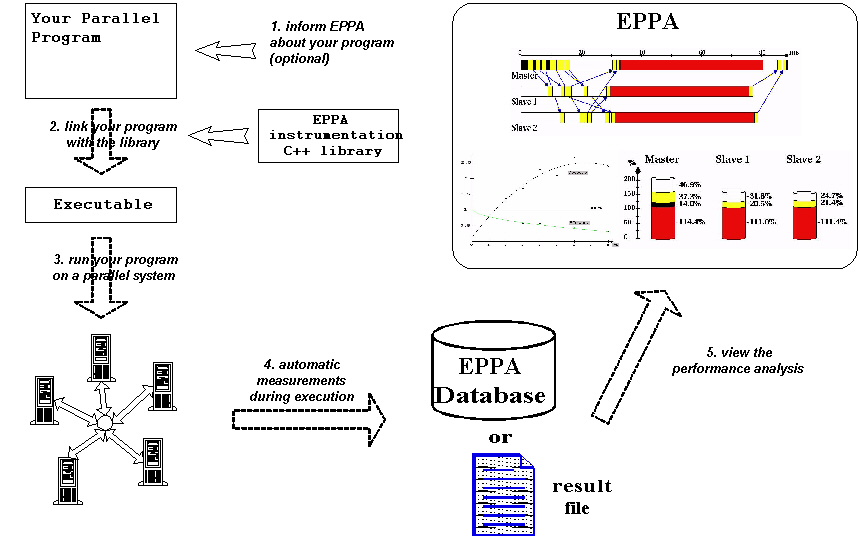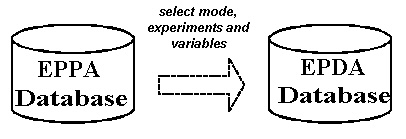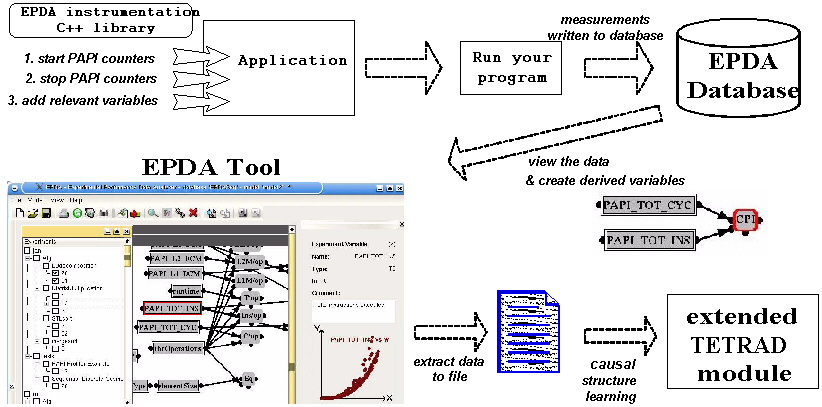| Experimental Setup |
| In order to analyze the performance of applications, as much as possible of the relevant variables should be measured and stored. For analyzing them, some derived variables should be calculated. |
 Performance Measurement of
Sequential Applications
Performance Measurement of
Sequential ApplicationsThe measurements are based on the PAPI hardware counters (like #instructions and cache misses) and the variables supplied by the user (like the application parameters, design decisions, compiler optimization level, #basic operations, ...). The EPDA instrumentation library facilitates the insertion of the experiments in the database. The EPDA tool let the user examine the experiments, shows the variables and data graphically and let the user create derived variables, like Cycles per Instructions(CPI) shown in the diagram. Finally, the user can make selections, write the data to file, which can be loaded into our learning module.
 Performance Measurement of
Parallel Applications
Performance Measurement of
Parallel ApplicationsPerformance data on parallel applications is measured automatically by using the profiling facilities of MPI (the standard interface for message-passing applications). The EPPA tool let the user view the results of its experiments.

Data can then be extracted from the database to be inserted as regular EPDA experiments in the EPDA database. One can analyze the performance on several levels - what we call the modes - like the overall parallel performance, but also the point-to-point communication delays and other interesting metrics.

 EPPA documentation
EPPA documentation